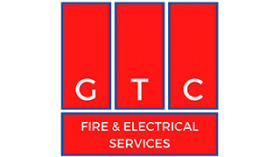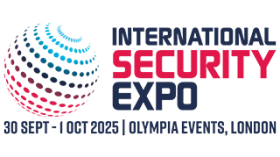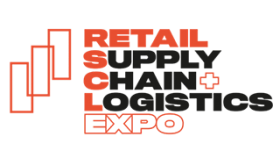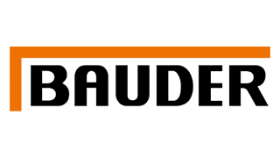Safeguarding Commercial Fire and Electrical Safety Across South England.
Considering the retrofitting of sprinklers in high-rise stock
Following the Grenfell Tower fire in June, Steve Seaber, senior consultant at the British Automatic Fire Sprinkler Association, looks at the accredited bodies that operate certification schemes for sprinkler installations In the immediate aftermath of the Grenfell Tower fire a number of authorities and housing providers announced their intention to retrofit sprinklers into their high-rise tower blocks. When considering how to implement these plans it would be beneficial to consider the lessons learned by those housing providers who already have experience of retrofitting sprinklers to such premises. Following the Lakanal House fire, Sir Ken Knight, the government’s chief fire advisor, suggested that ’it is not considered practical or economically viable to make a requirement for the retrospective fitting of fire suppression systems to all current high-rise residential buildings’. In fairness, there was no evidence to the contrary. As a result, the British Automatic Fire Sprinkler Association (BAFSA), with the support of the Sprinkler Coordination Group and South Yorkshire Fire and Rescue Service, sponsored a pilot project. The retrofit of a 13 storey tower block in Sheffield was completed in four weeks at a cost of £1,130 per flat. The resulting report, Safer High-Rise Living, provided supporting evidence to assist housing providers in considering the retrofitting of sprinklers in their high-rise stock. Authorities were advised to consider the retrofitting of sprinklers by coroners following inquests into both Lakanal House and Shirley Towers fires. Since the ,em>Safer High-Rise Living report a number of authorities have retrofitted sprinklers which has provided a body of evidence in terms of technical issues, solutions and costs. The systems have been installed for a number of reasons. For example, Leeds City Council sprinklered the three high-rise blocks designated as sheltered housing. A number of authorities have carried out risk assessments on individual blocks and concluded that retrofitting sprinklers was the most appropriate solution. These include three blocks in Hampshire, including Shirley Towers of a specific design. Manchester and Gentoo have fitted sprinklers as part of a major refurbishment of an empty block. The fire and rescue service have in a number of areas part or total funding where premises or occupants are considered be of higher risk. Some authorities have developed a rolling programme - Oxford five blocks in three years and Brighton 52 blocks in 25 years. The industry now has significant experience in retrofitting systems and the average costs are between £1,500 and £2,500 per flat depending on the number of rooms. The flats in Callow Mount were one bedroom units. Post Grenfell Tower, the number of authorities have stated they are going to sprinkler all of their high-rise blocks has risen dramatically. BAFSA and local fire and rescue services have given assistance to a number of authorities on how to approach developing a strategy for those installations. Standards and Third Party certification Authorities need to consider the most suitable system for their needs. To ensure that the system is fit for purpose they should require it to comply with one of the two British Standards for Residential and Domestic suppression systems: BS 9251:2014 – Sprinkler Systems for Residential and Domestic Occupancies – Code Of Practice and BS8458:2015 - Fixed fire protection systems. Residential and domestic watermist systems. Code of practice for design and installation. There is a need for those specifying systems to also seek to ensure that the components are compliant with the standard and that those designing and installing the system are competent. This is best achieved by requiring third party certification. BAFSA membership policy requires new associate installer members to be registered with a third party approval body and to achieve accreditation within two years or their membership is withdrawn. The concept of a third party certification scheme is to provide confidence to regulators, specifiers, industry and the public at large that the manufacturer or contractor has been subject to assessment of their competence against recognised industry or product standards and has satisfied these requirements. In the UK, third party certification (although widely recommended by many regulators and endorsed by Part B of the Building Regulations and guidance documents issued to support the current fire safety regulatory regime) is not mandatory, with the exception of ‘Gas Safe’ certification for those involved in the installation of gas appliance. On successful completion of a contract, a contractor who is a member of a third party certification scheme is able to issue a ‘Certificate of Conformity’, thus verifying compliance with the defined installation standards. Contractors who are members of a third party scheme are regularly audited to various degrees depending on their standing within the scheme and usually have to be quality assessed to ISO 9001: 2008. Design personnel have to demonstrate full competence in their field of work to the satisfaction of the scheme operator. Currently, there are three accredited bodies that operate such certification schemes for sprinkler installations. All three are UKAS accredited which means that they themselves are subject to audit and inspection. The Loss Prevention Certification Board operates the LPS 1048 scheme for commercial automatic sprinkler installations and the LPS 1301 scheme specifically for residential and domestic sprinkler installations. Warrington Certification Ltd operates separate FIRAS schemes for commercial and industrial sprinkler installations and residential and domestic sprinkler installations. International Fire Consultants have product and installation and installation schemes. Therefore, by choosing a third party certificated contractor with certification from a UKAS Accredited certification body they have the confidence that in addition to the contractor having been competence assessed in their activities by the certification body, the certification body are themselves subject to assessment of their competence and abilities by UKAS. Consequently, it is of the utmost importance that any selected contractor employed to undertake the work is fully conversant with the design practises of the correct relevant standard and can demonstrate competency within that particular scope of work. The independent third party is confirming that the certificated company/organisation is competent and suitable to undertake a certain type of work within recognised scope parameters. Tested or Approved – An important question There are a number of ‘innovative’ products in the market place many of which claim some form of equivalency to the existing standards. It is important that specifiers are confident that the product or system the being offered is, approved by a third party body. The language used to indicate compliance can be misleading, and includes phrases such as ‘tested’, witness tested’, ‘endorsed’ and ‘complies with’. Some of these products may have been tested by one of the UKAS approved third party approval bodies, but are not included on their approved products list. It is important that specifiers seek confirmation of compliance as part of the tendering process, if in any doubt clarification can be sought from the third party approval body. Competence Training and Qualification In conjunction with OFQAL recognised qualification bodies BAFSA has developed training and qualifications, which are now being delivered at a number of colleges in the UK. The qualification is aimed at those entering or with less than three years' experience of the fire sprinkler installation. Currently the IQ Level 2 Certificate in Fire Sprinkler Installation (residential and commercial) is delivered in a block release and day release learning style at Neath Port Talbot College and The Manchester College. Two more colleges in Scotland and London will soon be offering the courses. The advent of regulations in Wales requiring sprinklers in all new domestic property from 2016 led to the development of an Agored Award in Domestic Fire Sprinkler Installation and Maintenance is delivered at two welsh colleges: Neath Port Talbot College, S. Wales, and Llandrillo College, Rhos on Sea, N. Wales. Discussion and delivery plans are underway for The Manchester College and Paisley College to deliver this qualification under contract with Llandrillo College. The three day course is aimed at L3 qualified plumbers who hold a water regulations qualification. BAFSA has agreed to establish a requirement for its member companies to have a minimum proportion of its own employees and sub contractors initially of 10 per cent with incremental increases in future. It is also intended to develop a Level 3 qualification and to seek to embed the training requirement into the third party approval schemes. Those specifying systems should also consider asking potential contractors for evidence of this training as an indication of competence. Summary The sprinkler industry now has a body of experience in retrofitting sprinklers into high-rise and low-rise residential premises. This experience means that contractors are well versed in the installation of such systems and the importance of related activities such as tenant liaison. When developing their specification to install sprinklers housing providers should consider the following: do the components and system comply fully with an appropriate British Standard? Is that compliance supported by certification from a UKAS accredited third party approval body? Is the installer certified by a UKAS accredited third party approval body to install systems? Can the installer provide evidence of the competence of staff?
Company Focus
Event Diary
An essential date in the calendar for those responsible for homeland and global security; International Security Expo returns to Olympia in London on 30 September & 1 October 2025.
Every sport, from grassroots football to world-class tournaments, depends on one constant: high-quality playing surfaces and well-maintained green spaces.
Tickets: Free registration available at www.retailscl.com
The Retail Supply Chain & Logistics Expo is the UK’s leading event for retail supply chain and logistics professionals, showcasing the latest innovations in fulfilment, 3PL, AI-driven automation, and warehouse technology.
Supplier Profiles
Bauder Accepts Keys to its New UK Distribution Centre at Gateway 14
Bauder marked a major milestone in its UK expansion with the official handover of a brand
Words of World: Bridging language barriers with excellence
At Words of World, we specialise in professional translation and interpreting, d
Latest Features
The British Institute of Cleaning Science (BICSc) and the Cleaning & Support Services Association (CSSA) have successfully completed a groundbreaking project aimed at exploring the future of cleaning. This collaboration marks a significant milestone in the cleaning industry, reflecting a shared commitment to embracing innovation with confidence.
The Crown Commercial Service’s (CCS) new framework on Language Services (RM6302), dealing with translation, transcription and interpreting, is live, running from 7th May 2025 to 6th May 2028.










